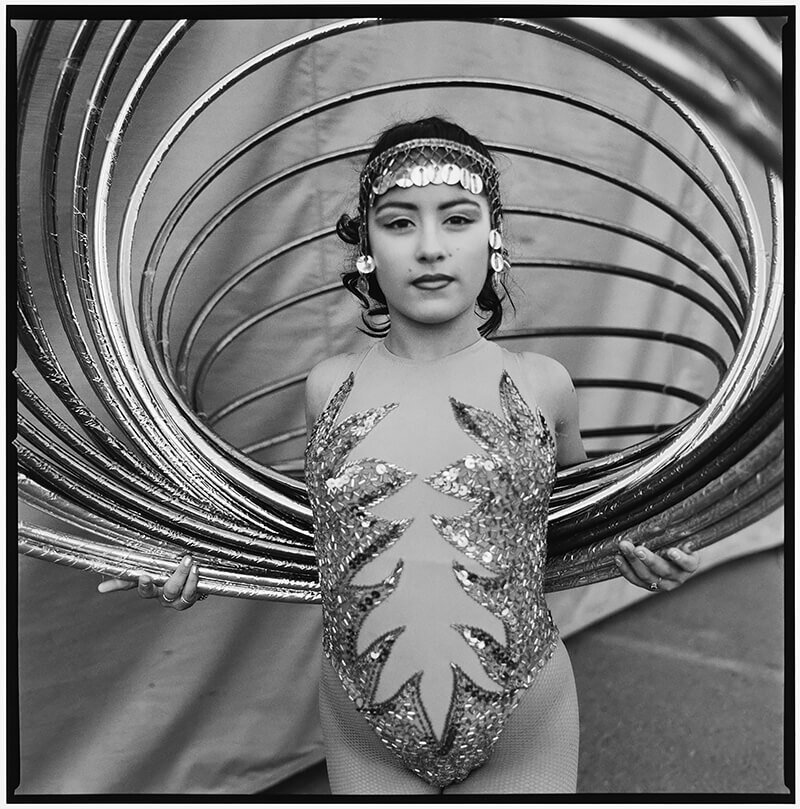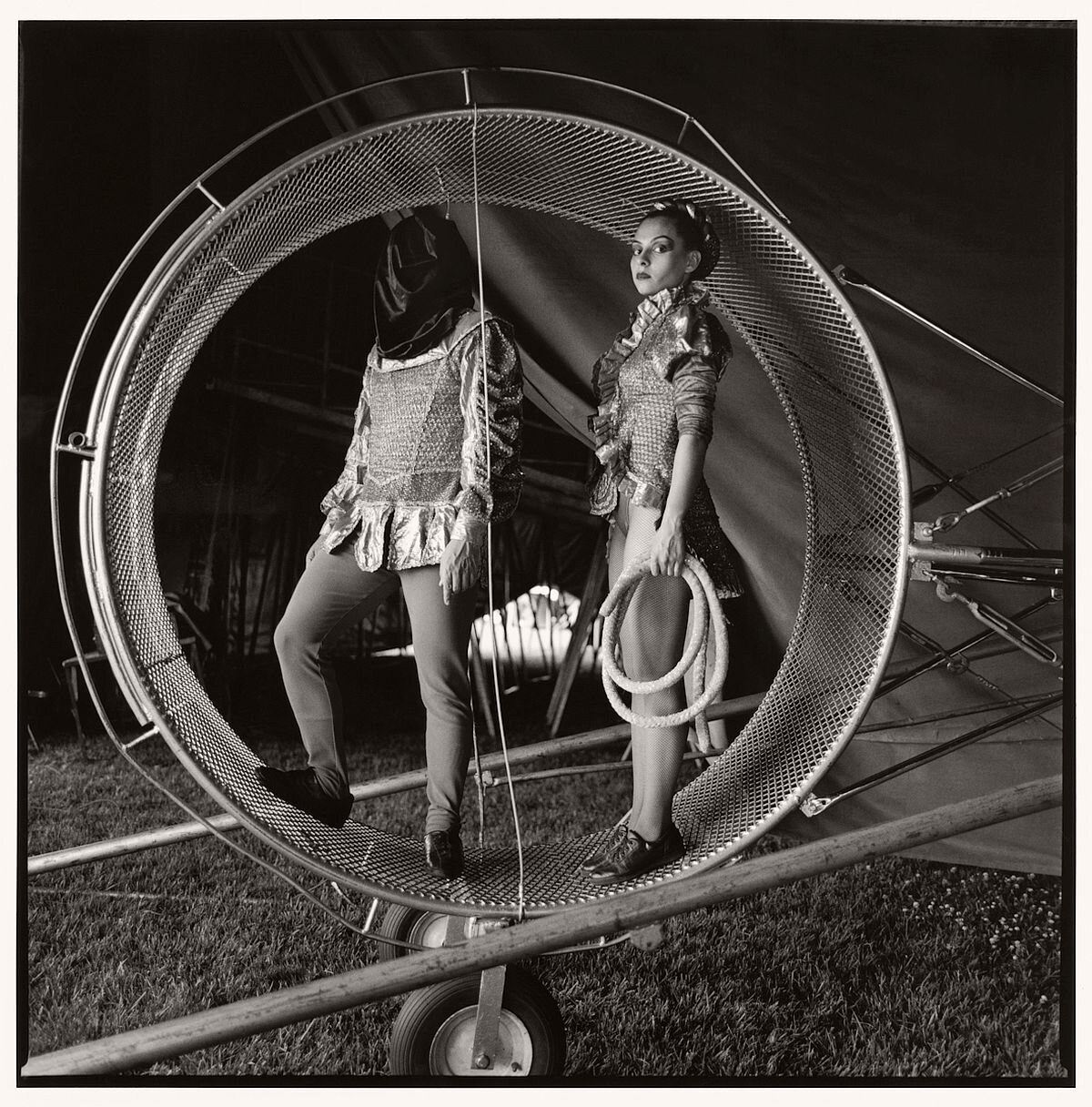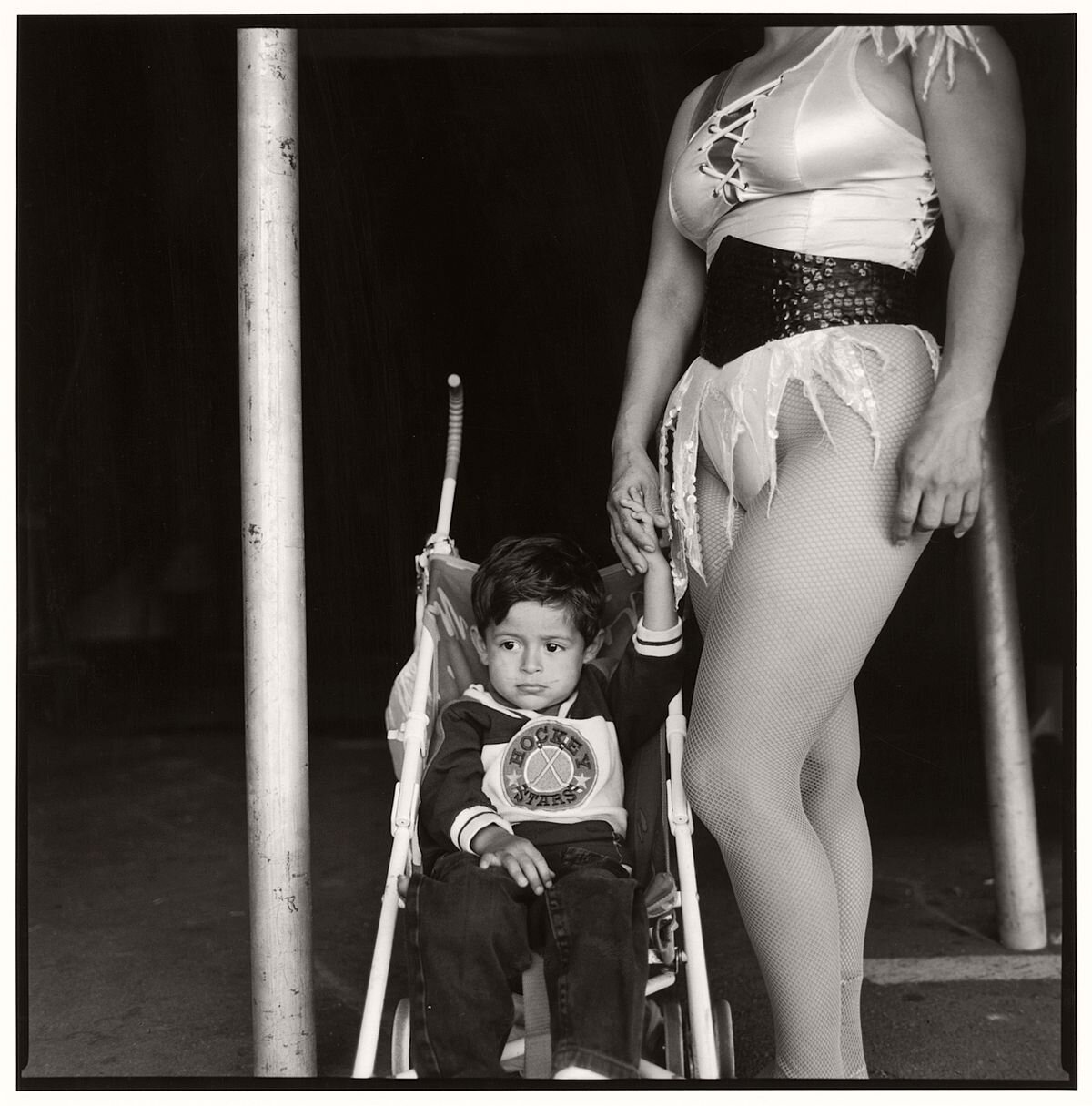Norma I. Quintana (born in Cleveland, Ohio, 1954) is an American photographer and educator working in the tradition of social documentary. She photographs with film, primarily in black and white using available light. Quintana has studied under Mary Ellen Mark, Graciela Iturbide and Shelby Lee Adams. She has lectured nationally at major universities, including art residencies at Penn State and American University Washington D.C. She is a founding member of the Bay Area non-profit, PhotoAlliance.
For a decade, photographer Norma I. Quintana followed an American, traveling one-ring circus photographing its acrobats, aerialists and artists. Not satisfied to snap images from the stands, Quintana photographed her subjects behind the scenes, perfecting their craft. There is a marked intimacy in Quintana’s photographs, achieved by slowly introducing herself into a community of performance families. As author Mona Simpson describes, “The trust between photographer and subject that developed over that time is evident. Quintana took her time learning the lineage of these circus families. She presents them not as freaks or compulsives, but as workers in a private, insular, now almost-extinct world.”
Quintana’s most recent project, Circus: A Traveling Life has been published by Damiani Editore, Bologna, Italy and distributed by D.A.P. Artbook Catalog October 2014. It is her first art book. Quintana currently lives in California with her family.
– How and when did you become interested in photography?
Photography has been a lifelong fascination with me. My Masters in the Social Sciences has served as a foundation for me and the camera, a vehicle for me to say something and document the lives of those in the margins.
– Is there any artist/photographer who inspired your art?
Diane Arbus was key. She focused on people in the fringe of society. Also Sally Mann for her connection to her family and what surrounds her. Dorothea Lang is another favorite.
– Why do you work in black and white rather than color?
Using only black and white is a creative choice for me. I believe that black and white photography is timeless in its look. It provides highlights which can add drama and emphasize composition. It allows me to follow the light… I only shoot with available light.
– How much preparation do you put into taking a photograph/series of photographs?
I spend a significant amount of time with my subjects prior to even using my camera. For me it is imperative to know who I am photographing and understand their environment throughout an entire day. I walk around and observe before I even lift the camera. I shoot with film (on a medium format Hasselblad) so I have to be confident when I shoot.
Additionally I will research online about who I am photographing. For example, when I photographed for Circus A Traveling Life I read about the history of circuses and learned all about different circus acts. I journal as well and prepare questions I may ask my subjects… carry model release at all times… and always follow up with them. I am the opposite of a street photographer in regards to my preparation.
– Where is your photography going? What projects would you like to accomplish?
I had always wanted to have a published book and was recently able to work with an amazing book designer and was approached by an Italian publisher. The monograph was released in late 2014 and this year I have been touring and promoting the book and prints. I want to continue to photograph. I am researching for a series on organ donors & recipients. I’d love to do other books… lecture, and teach about documentary work.














